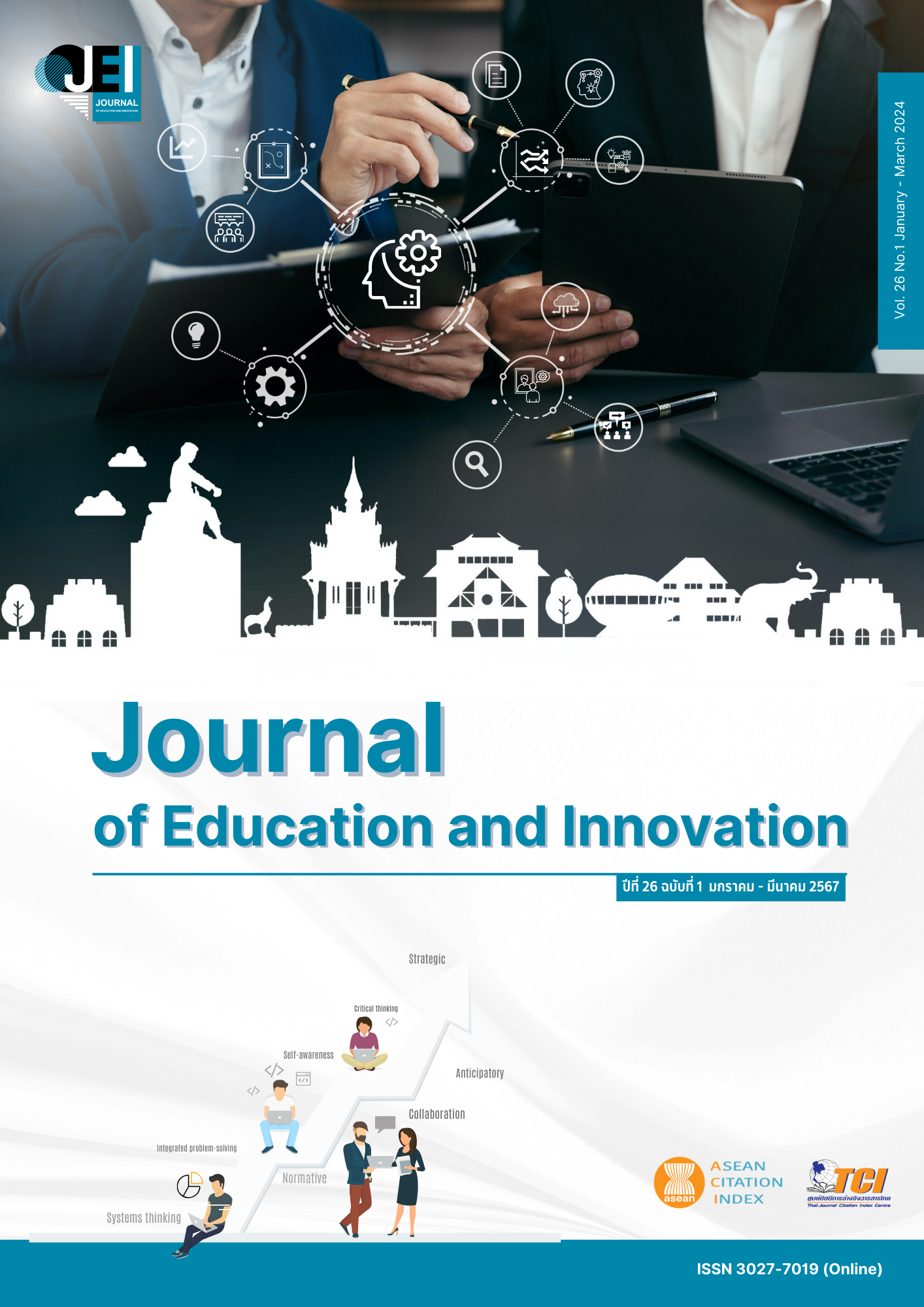PHYSICAL ACTIVITY MANAGEMENT MODEL FOR HANDICAPPED STUDENTS WITH PHYSICAL DISABILITIES IN STATE HIGHER EDUCATION INSTITUTIONS IN THE NORTHERN REGION
Main Article Content
Abstract
This Research focused on research and development using the mixed method of quantitative and qualitative research methodology. The objectives of this research were 1) to study factors and components affecting physical activity management for Handicapper student with physical disabilities, 2) to build a model of physical activity management for Handicapper student with physical disabilities, and 3) to assess the model of physical activity management for Handicapper student with physical disabilities. The sample group was obtained by using Purposive sampling, including Handicapper student with physical disabilities in higher education institutions in the northern region of 9 universities including 112 students, and 18 administrators and officers in higher education institutions in the northern region. The model were reviewed its efficiency by using focused group of qualified expertise as well as the model evaluation by administrators and officers who involve in the physical activities. The statistics used for analyzing the data was Pearson Product Moment Correlation Coefficient, mean, and standard deviation. The research result found that: 1. The factors affecting physical activity management for Handicapper student with physical disabilities enabling that Predisposing factor, Enabling factors and Reinforcing factors, all three factors, were significantly associated with physical activity behavior at the .01 level and the components related to physical activity management consisted of 3 components: the first component: input, the second component: process, the third component: output. 2) The model of physical activity management for Handicapper student with physical disabilities consisting of 3 components: the first component: input, the second component: process, the third component: output. And 3) the assessment of the model of physical activity management for Handicapper student with physical disabilities were practical in term of operation and the benefit of the model was at “the highest level” ( = 4.55) and (
= 4.61) respectively.
Article Details

This work is licensed under a Creative Commons Attribution-NonCommercial-NoDerivatives 4.0 International License.
The owner of the article does not copy or violate any of its copyright. If any copyright infringement occurs or prosecution, in any case, the Editorial Board is not involved in all the rights to the owner of the article to be performed.
References
Bangmo, S. (2015). Organization and management. Bangkok: Wittayapat.
Carmeli, A. (2004). Assessing core intangible resources. European Management Journal, 22(1), 110-112.
Chelladurai, P. (2009). Managing organizations for sport and physical activity (3rd ed.) New York: Holcomb Hathaway.
Choktaweepanich, B. P. (2016). Physical activity management model of students in Northern Region Rajabhat University (Doctoral dissertation). Phitsanulok: Naresuan University.
Department of Disease Control. (2018). The impact of NCDs on society. Retrieved May 11, 2021, from http://thaincd.com
Frost, J. L., Wortham, S. C., & Reifel, S. (2012). Play and child development (4th ed.) Boston, New Jersey: Pearson Education.
Geraplangsub, A. (2015). The Development of Recreational Sport Management Model of Bangkok Metropolis (Doctoral dissertation). Bangkok: Chulalongkorn University.
Good, C. V. (1973). Dictionary of education. New York: McGraw-Hill.
Jalayondeja, C., & Jalayondeja, W. (2013). Leisure, household and work-related activities measured by physical activity scale for individuals with physical disability (PASIPD). Thai J Phys Ther, 35(3), 127-140.
Li-thong, P., Chaiyarak, S., & Kerdnet, A. (2014). Factors related to health exercise behavior of the first year Students of Suan Dusit Rajabhat University (Research report). Bangkok: Suan Dusit Rajabhat University.
Pengsawat, W. (2010). Model development research. Rajabhat Sakon Nakhon University Journal, 2(4), 2-15.
Rungruangsin, P. (2016). The development of sports for health management model in Rajabhat University (Doctoral dissertation). Phitsanulok: Naresuan University.
Saravirote, A., & Janyam, K. (2014). Factors influencing health promotion behavior of undergraduate students at Prince of Songkla University, Hat Yai Campus. Kasetsart J. (Soc. Sci)., 35(2), 223-234.
Siwapon, N. (2013). States, problems and needs for exercise of the physical disabled at Nontaburi Province in 2011. Rajabhat Chiang Mai Research Journal, 14(2), 37–46.


